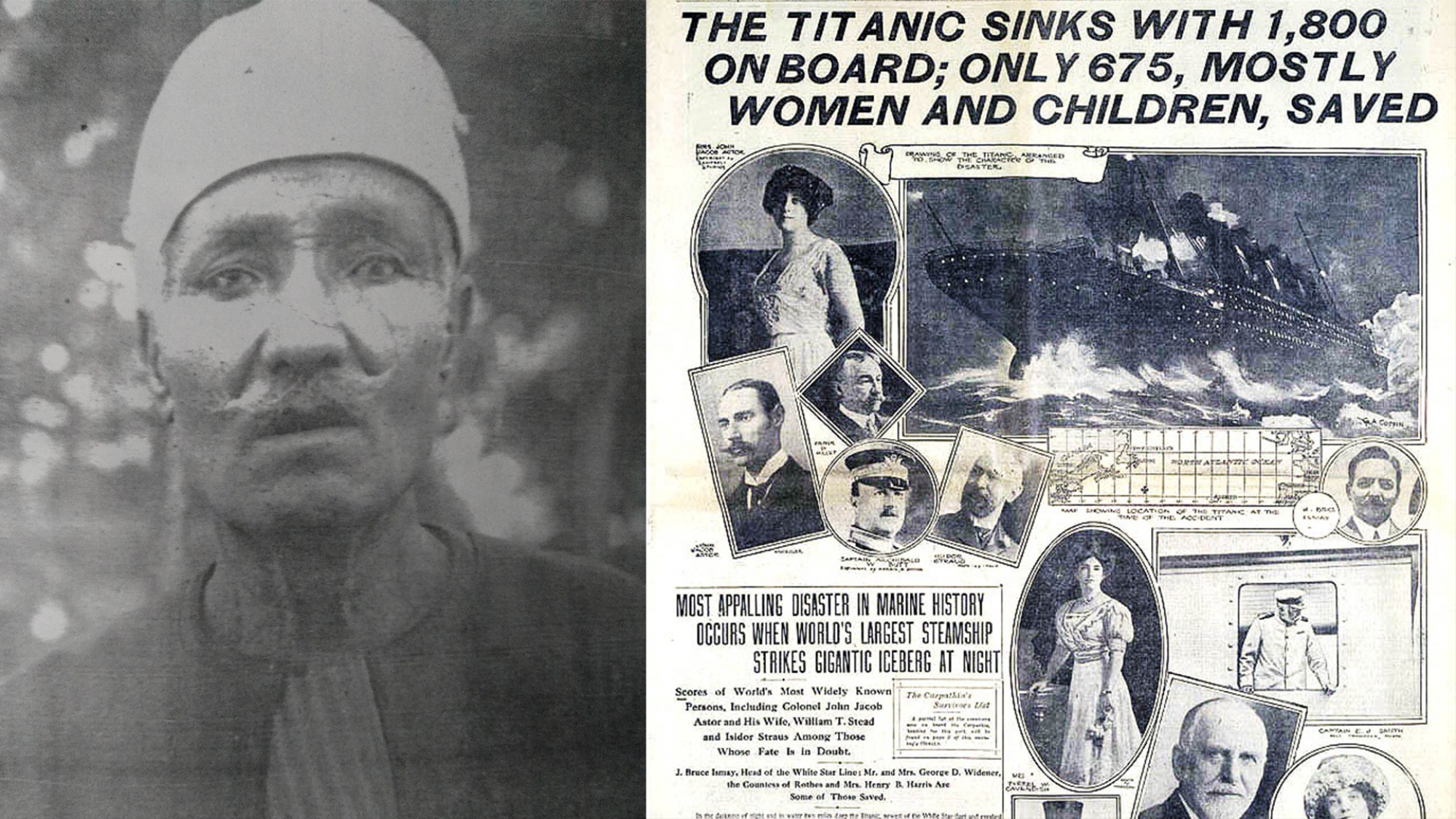Hamad Hassab was one of the few Arab-speakers onboard the Titanic, and the only Egyptian.
In 2012, I watched a TV report about the Lebanese victims of the Titanic – aired to mark the centenary of the ship's sinking. It was news to me that there were any Arabs onboard the ship that day, so to learn more I searched out their stories on Encyclopedia Titanica – a comprehensive online database that aims to document the lives of everyone who boarded the Titanic.
I found plenty of stories of passengers from around the Middle East, but when I narrowed my search to just my fellow Egyptians, only one name came up: Hamad Hassab.
All the website had was his name; no other details about his life or his family were known. That's when I decided to make it my personal mission to discover the story of the one Egyptian who boarded the most famous sunken ship in history. Perhaps unsurprisingly, that proved more difficult than I imagined.
I turned to the official Egyptian archives association in the hope of finding a birth or death certificate. I spent months reading every newspaper published in the weeks before and after the Titanic's departure. I even checked whether Hamad Hassab had sent any telegrams as the ship went down. I came up with nothing.
The people I contacted during my search kept suggesting that Encylopedia Titanica simply translated his name wrong and I was searching for someone who didn't exist, which seemed increasingly likely. Still, the name was all I had to go on. Eventually, I found out that there had been a Hamad Hassab, who had been a friend of Henry Harper – an American businessman whose grandfather founded the company that eventually grew into the global publishing company HarperCollins. Harper was one of 700 guests on the Titanic who survived. I contacted the Harper family thinking I was finally on to something, but nobody had any details to share about Hassab.
After that disappointment, I knew I had run out of road. As a way of closing the chapter, I published the details of my three-year-long failed investigation in an Egyptian national newspaper. Weeks later, a person claiming to be a relative of Hassab got in touch. She explained that the family were reluctant to speak with me at first, but after I reassured them of my intent she put me in touch with two of his grandsons – Anmar and Serag El Din, the youngest of whom was 70 years old.
The men seemed well-versed in their grandfather's life and his journey on the Titanic, though their accounts sometimes contradicted each other. Through their stories and documents – including the only photograph of Hassab, taken shortly before his death – I could piece together the story of how Hamad Hassab survived the sinking of the Titanic.
According to his family, Hassab had been invited onboard by Henry and his wife, Myra Harper, as a thank you for the time Hassab had hosted them in his home during their visit to Cairo – even acting as their translator and tour guide.
Hassab travelled first class on the Titanic, but apparently spent much of that time choosing not to socialise with the other guests or "the beautiful young women who tried to chat with him," Anmar told me – earning Hassab the moniker "The Mysterious".
After the ship struck the iceberg, Hassab is believed to have overheard one of the Titanic's staff say that the ship was definitely going to sink. From there, he rushed to tell his friends. The three of them immediately started putting on as many warm clothes as they could, before grabbing the Harpers' pet dog, Sun, and making their way to Lifeboat 3.
The family legend claims Hassab had to carry Henry and Myra on his shoulders to drop them in the rescue boat, before jumping in himself and cutting the rope that attached the boat to the ship, in order to escape the terrified crowd of passengers who were trying to jump in. Because of that, the boat sailed away only half full. That's how Hassab and the Harpers are believed to have survived.
Hassab's handwritten postcard telling his family he had survived.
Hassab's handwritten postcard telling his family he had survived.
Three days after the ship sank, Hassab's family received a letter in his handwriting reassuring them that he had survived. But it would take another three years for him to come home. His family have no idea where he went in those intervening years, simply because he always refused to talk about it. After a while, they stopped asking – holding the trauma of the event responsible for the silence around that period of his life.
After discovering all this, I contacted Encyclopedia Titanica to make good on my initial goal of completing Hassab's story. I was surprised by how excited they were to hear more about his life. They told me that, despite their best efforts, they struggle to get comprehensive information about passengers from the Middle East. A report was eventually published on the site, and I'm now an official reference to Hamad Hassab's story and journey on the Titanic. It's a journey that I'm proud to be a very small part of.
By Yasmeen Saad





